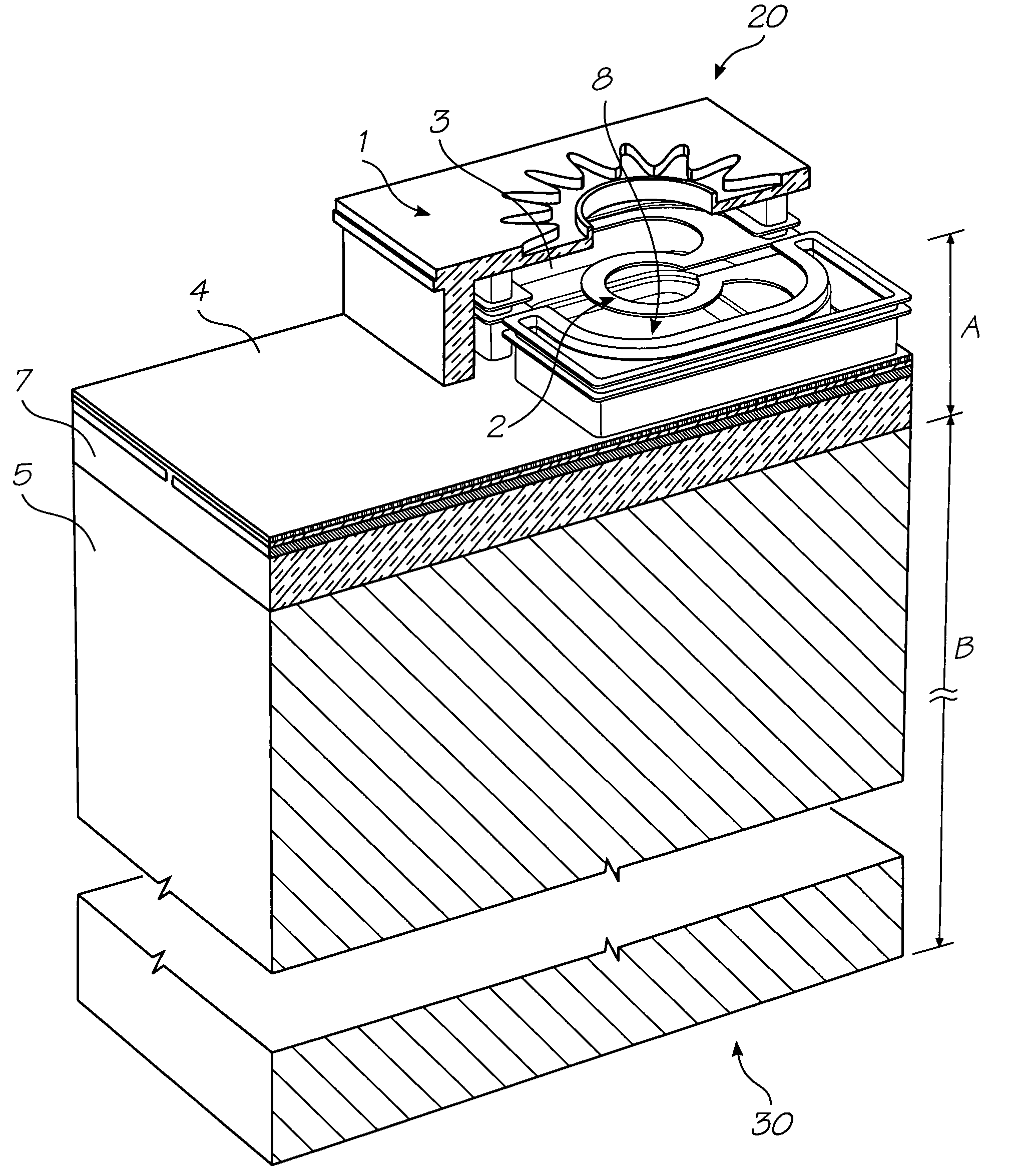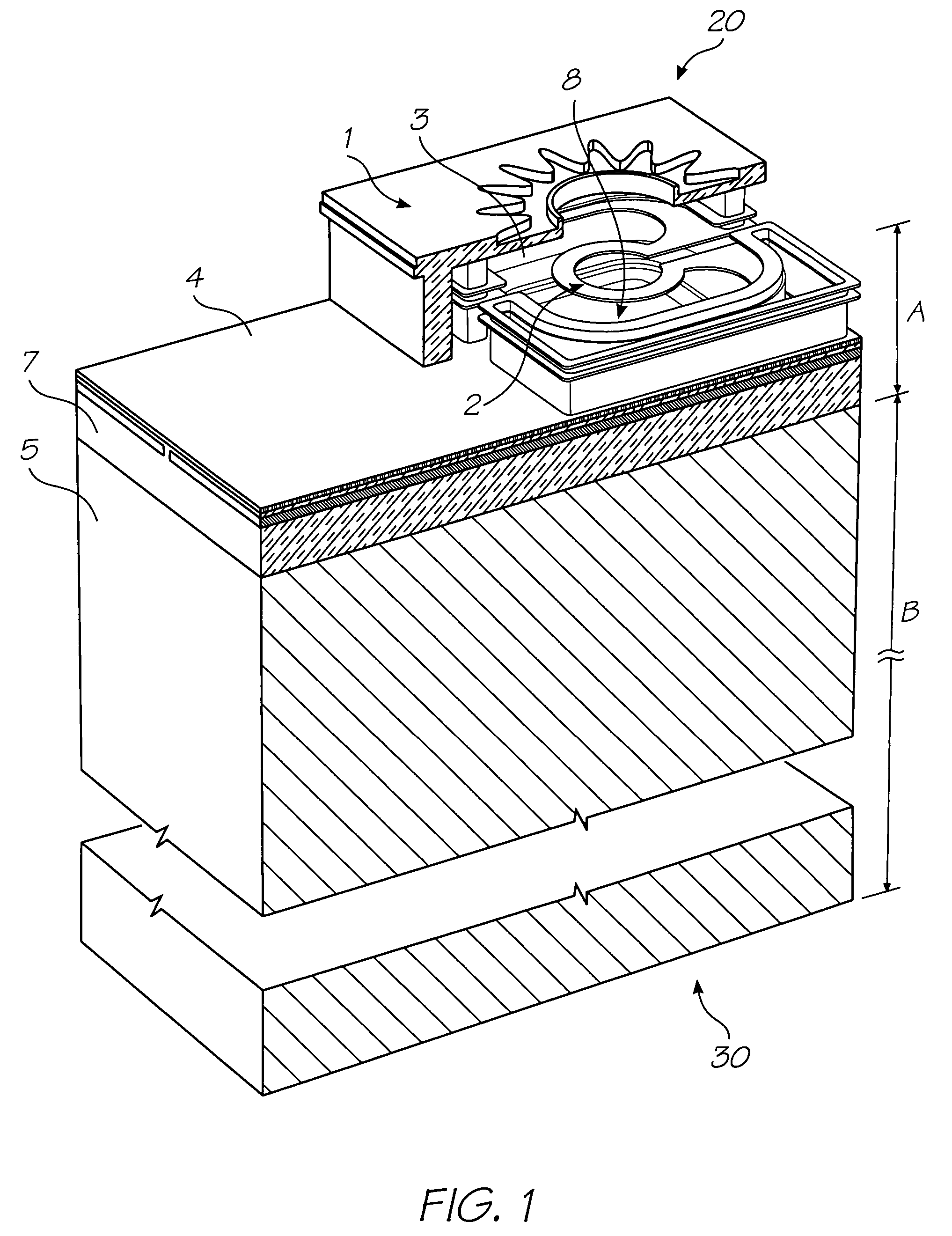Method of modifying an etched trench
a technology of etching and etching, which is applied in the direction of recording equipment, instruments, and recording information storage, etc., can solve the problems of slowing down the etching rate, placing considerable demands on the etching method employed, and etching the ink supply channel, so as to reduce reduce the degree of flaring. , the effect of reducing the angle of flaring
- Summary
- Abstract
- Description
- Claims
- Application Information
AI Technical Summary
Benefits of technology
Problems solved by technology
Method used
Image
Examples
example
[0147]A silicon wafer having a thickness of 200 □m was prepared as follows. Using a standard anisotropic DRIE process a trench, having a diameter of 14 □m and a depth of 28 □m, was etched into a frontside of the wafer. The trench was filled with photoresist to form a front plug. With the frontside of the wafer attached to a glass handle wafer, the backside is then etched to within 5 □m of the back surface of the front plug. Again, a standard anisotropic DRIE process is used for backside etching. The back-etched main trench had a depth of about 170 □m and a diameter of about 21 □m. FIG. 9 is an SEM micrograph of the silicon wafer after back-etching to within 5 □m of the front plug.
[0148]Back-etching was continued to the back surface of the front plug and about 5 □m past the front plug, under anisotropic etching conditions. FIG. 10 is an SEM micrograph of part of the trench after back-etching past the front plug. As shown in FIG. 10, a spiked circumferential rim extends around the fro...
PUM
| Property | Measurement | Unit |
|---|---|---|
| depth | aaaaa | aaaaa |
| depth | aaaaa | aaaaa |
| bias power | aaaaa | aaaaa |
Abstract
Description
Claims
Application Information
 Login to View More
Login to View More - R&D
- Intellectual Property
- Life Sciences
- Materials
- Tech Scout
- Unparalleled Data Quality
- Higher Quality Content
- 60% Fewer Hallucinations
Browse by: Latest US Patents, China's latest patents, Technical Efficacy Thesaurus, Application Domain, Technology Topic, Popular Technical Reports.
© 2025 PatSnap. All rights reserved.Legal|Privacy policy|Modern Slavery Act Transparency Statement|Sitemap|About US| Contact US: help@patsnap.com



